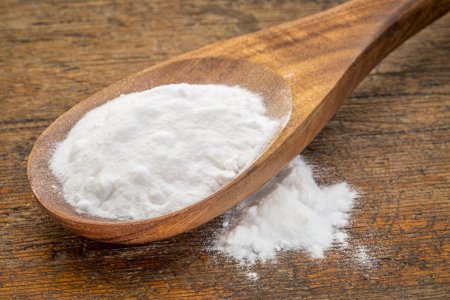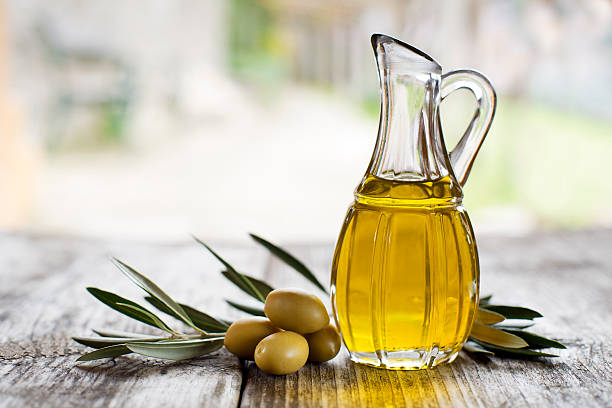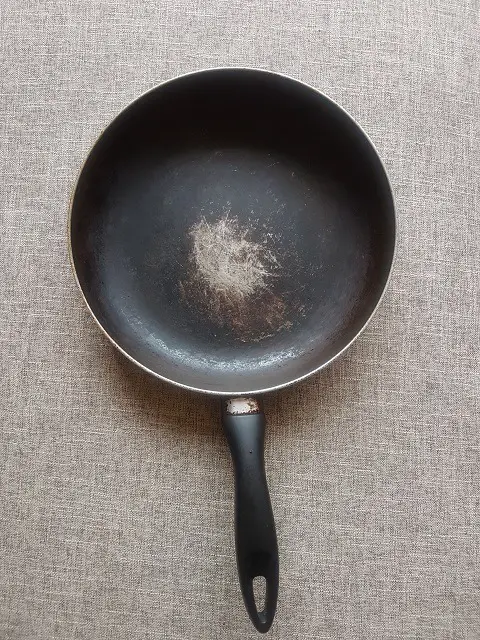Are you interested in knowing how to restore a nonstick pan that is losing its nonstick properties?
If you’re on a strict budget, knowing how to restore your pan will help you make savings.
[toc]
Restoring your pan means you do not have to end up tossing pans away regularly.
You will be pleased to know that do not have to be an expert to fix your worn and old nonstick pan.
There are a number of easy ways of restoring your pan so that it stays as good as new for a longer period.
Popular issues with nonstick pans
A pan is one of the most important items in a kitchen and is available in different kinds. When a pan features a special coating (commonly Teflon) to prevent food from getting stuck, it’s sold as a nonstick pan.
Purchasing the best nonstick pan comes with various benefits, such as adding fun to the cooking process and resulting to an easier cooking and cleaning experience.
No products found.
While a good quality nonstick pan and pot may be an expensive investment, it is usually the best way to avoid a discussion on restoration of nonstick cookware.
A nonstick pan will not cause your food to stick so it is easier to turn and flip your food.
Since there’s no food residue getting stuck onto the surface of the pan, cleanup is easier as well.
You will not have to spend lots of soap to wash your pan or even spend much time scrubbing it.
But you need to know that a frying pan does not last forever. Using metal utensils on nonstick cookware will cause the surface to get scratched and shorten its life span.
Also, using an abrasive cleaning pad such as steel wool will also damage the coating.
The combination of time, extensive usage and food (and oil) build-up will also make the nonstick surface to get worn, damaged or chipped.
When to replace a damaged nonstick pan
If your nonstick pan or pot ends up damaged and peeling, it will definitely lose its nonstick properties.
There are concerns that using a peeling or flaking nonstick pan may cause health concerns, so to be on the safe side, you should consider discarding such cookware and investing in a new set.
It is important to know the best time to change and replace your pan. Usually, most nonstick pans will last for about five years, though a few high-quality ones might even last for over five years.
However, you need to have newer pans to use as an alternative to older pans. Knowing how to restore your nonstick pan is important and you can make lots of savings in the process.
That is why being knowledgeable about repairing such a coating or surface will be helpful as it may extend the life of your existing cookware.
No products found.
Ways of restoring your nonstick pans and pots
1. Use a special mixture to restore the pan
Using a special homemade mixture is great way of restoring a nonstick pan.
Mix one cup of water, 2 tablespoons of baking soda and ½ a cup of white vinegar. Allow it to mix and set your pan on the stove.

Then heat it until it boils; allow it to boil for ten minutes.
Use can rub vegetable oil directly on the surface to clean and re-season the pan. Make sure you rub the oil while the pan is still lukewarm, or at room temperature. If you want to get the nonstick back re-seasoning is the best option.
2. Use a spray to restore a nonstick pan
There are several ways of restoring a nonstick pan. One of those ways is using the nonstick pan repair spray. Pan repair sprays can be purchased online or from home improvement stores.
You should thoroughly wash your pan and ensure there’s no remaining food residue on the surface of the pan. Then, give it a bit of time to dry before you use apply the repair spray.
Spray an adequate amount of the repair spray on your pan. Ensure that you have a thick and even coat on the inside part completely. Allow your pan to sit for 30 minutes.
After that, preheat your oven to 500°F for ten minutes. Put the pan in the oven and allow it to sit for 45 minutes then turn the oven off.
Allow the pan to sit inside the oven and cool down on its own. You don’t have to open the oven. If your pan has cooled off entirely, wash it once more. Use dish washing soap and a soft sponge.
When storing your pans, ensure you use a separator to make sure nothing scratches the surface. The pan will be looking almost new and ready for use.
3. Use the services of a coating specialist or the manufacturer
There are other options that don’t need your direct participation. To start with, you can get in touch with a service provider that specializes in coating cookware with Teflon. They’re experienced professionals with knowledge of how to treat damaged or worn pans.
You might have to spend more; however, you’re sure to get a pleasing outcome that makes the pan almost new.
Another way is getting in touch with the manufacturer (the one from whom you purchased your pans). Reliable companies with top-quality pans often give a warranty, which can help with the re-coating and repair.
Some firms might offer to refinish your pan without you making any payments. Others might ask you to pay for the service.
Ensure you compare the costs involved in restoring the nonstick cookware with what it would cost you to purchase a new set, including any shipping costs to and from the manufacturer.
If the costs are almost the same or if the cost and hustle of restoring your pan is more than that of buying a new one, toss the old pans and go for a new set.
No products found.
Why is my nonstick pan sticking?
Nonstick coating may stop to release food and start to stick because of various reasons which include:
- Using aerosol cooking sprays – these sprays burn at lower temperatures and will burn into the coating resulting in spray build-up. This can result in sticking and damaging the nonstick coating and may give the pan a “rusty” look. You can use margarine, coconut oil, olive oil, butter and peanut oil with your nonstick pans for flavor.
- Using high heat – high heat isn’t advised for nonstick items since this will result in sticking. You should use low to medium heat to preserve the nonstick coating.
- Wrong cleaning methods – make sure you use warm soapy water with a soft nonstick friendly sponge to clean pans after each use. This is to ensure food residue doesn’t build up that will, later on, cause sticking and damage to the nonstick coating.
Do not use sharp metal objects to scrap off food residues from your nonstick pan as this will reduce the lifespan of your pan.
Does cooking spray ruin nonstick pans?
Although cooking spray is simple to use and healthier as it reduces the amount of oil used in food, it has a worse effect on the pan compared to pour on oil.
Whenever you use it, chances are you do not place food to cook on every part of the pan that has the cooking spray. This will cause the unutilized sprayed oil to bake onto the nonstick. Ultimately, this will create a film and cancel out the nonstick properties of your pan.
If you would like to prevent damage to your nonstick cookware, consider using oil such as olive, coconut oil or butter. They are also healthy options especially if used sparingly and will contribute to great tasting meals.
Does Olive Oil ruin nonstick pans?

There are very few oils that you can use to lubricate a nonstick pan. Butter, sunflower oil, olive oil, canola oil and vegetable oil are a few of the cooking oil choices available in most markets.
Vegetable oil like soy oil is very hard to clean up and in the long run ends up being very harsh on a nonstick pan’s surface.
Olive oil, on the other hand, appears to do a better job compared to vegetable oil in increasing a nonstick pan’s life; luckily, olive oil is also considered to be a healthier option and you hence get dual benefits of preserving your nonstick set and being healthy.
Can a nonstick pan be re-coated?
Truth be told, not all nonstick cookware has a lifetime guarantee. Some even have a shorter life than normal pans, regardless of the handling.
Their nonstick features are like to decay ultimately. Just like any other cookware, nonstick pans deteriorate ultimately and often lose their nonstick capabilities.
Many people do not clean their pans well. They do not provide them with the right attention they require, increasing the deterioration process.
If the surface of your nonstick pan has stains or scratches, it will just make the quality of the nonstick less effective.
While it doesn’t make sense to purchase new pans each time the coating comes off even slightly, you should consider the risks associated with a peeling pan; also assess the hustle associated with trying to re-coat an old pan that may already have served its time.
If the nonstick pan or pot has served you well over several years, consider bidding it goodbye and getting yourself a good quality nonstick pan or pot with a lifetime guarantee.
Have a look at our articles on the best nonstick pans and best nonstick pots for some tips on the buying the best nonstick cookware that will give you long service.
Re-coating nonstick pans and pots is still an option as some may consider it inexpensive. However, the cost may depend on various factors.
This is because the costs involved are not just the cost of re-coating, but may include additional costs of shipping or purchasing the re-coating material.
There are a few ways of re-coating the nonstick pan, some more full proof that others. These include:
- Re-coating Spray – you can purchase a re-coating spray which you will spray on the pan. This method is not full proof and does not guarantee long lasting results. It may however give your nonstick pan a longer life.
- Contact the manufacturer or a re-coating specialist – depending on how soon after purchase the nonstick coating comes off and especially if you are within warranty, you may consider contacting the seller either to fix or replace it.
- Seasoning and cleaning them – This technique may help to reduce the visibility of the stains and scratches and make the pan appear newer.
While a seasoned pan will serve you for a little longer, it is recommended that you start to budget for a new set of cookware as its shelf life will not be long.
After seasoning or re-coating the pan, it will appear shinier. Scratches, grease, and rust will fade. Stains can also vanish, making the pans appear new.
Re-coating or seasoning your nonstick pans and pots are temporary solutions which may save you some money which you can eventually apply towards the purchase of your new cookware.
My nonstick pan is sticking, how do I get the nonstick back?
Nonstick pans are good until the nonstick coating starts coming off and they begin to lose their nonstick capabilities.
If you have food sticking to your previously nonstick pan, here is how you can repair it and get the nonstick back.
To start with, why do these pans begin to stick? Primarily, coated pans are simple to clean up; however, they do get scratches and stains with continuous use.
Over time, grease and other small food particles might build up in these places, which makes them sticky. This can negatively affect the efficiency of the nonstick surface.
Fortunately, all you should do to improve on the nonstick factor is thoroughly cleaning up and re-seasoning any scratched and stained spots.
You can do this by mixing ½ cup of white vinegar, two tablespoons baking soda, and one cup water in the pan that has lost its stick. Set it on your stove and heat until boiling for ten minutes.
You should wash your pan as normal, then run veggie or olive oil on the surface of the pan. This is to re-season the pan and get some of the nonstick quality back.
Rubbing the oil into your pan when at room temperature or lukewarm is essential for keeping it from getting sticky later on. Melting oil or butter in your pan before you cook is not enough.
Now that you are knowledgeable about how to season a nonstick pan, and how simple they’re to cook with and look after, you will want multiple in your kitchen.
We still advise that you be realistic about when it is no longer viable to keep restoring your nonstick cooking set, in which case you should discard it and go for a good quality replacement.

